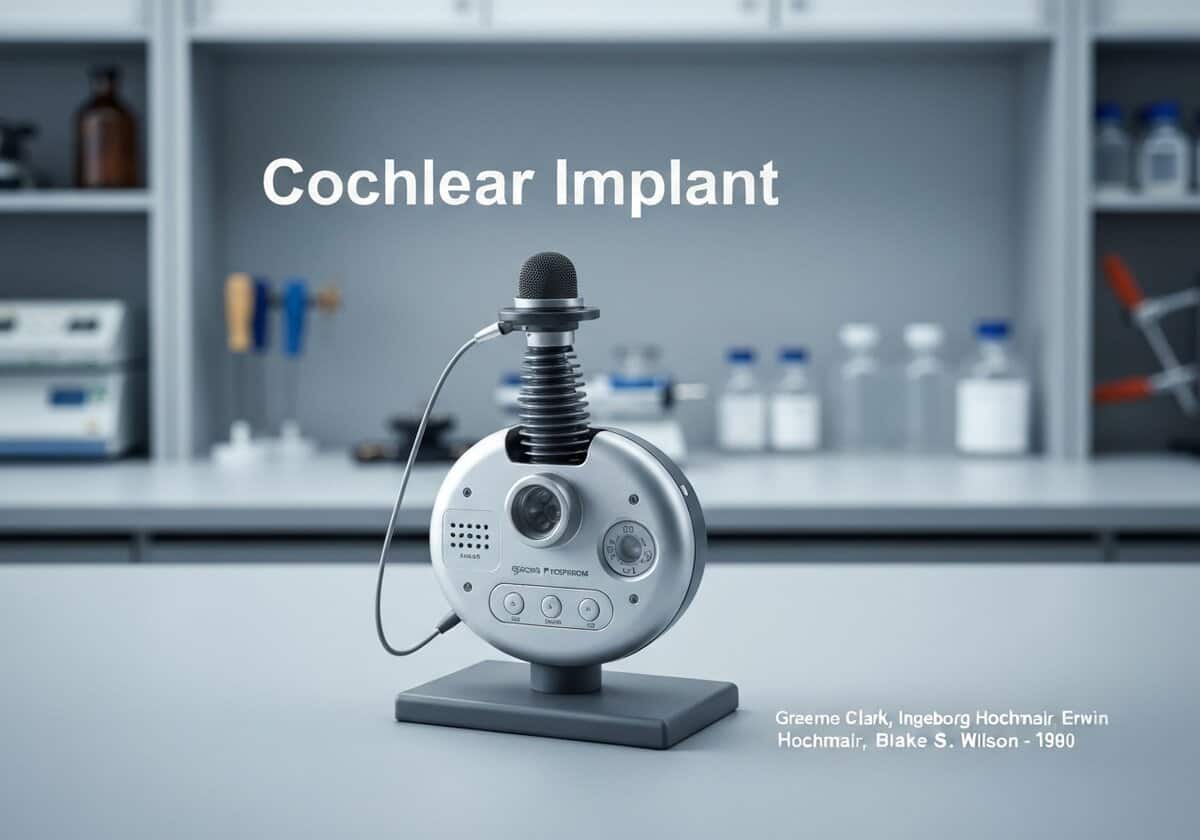人工耳蜗是一种通过手术植入的神经假体装置,可为重度至极重度感音神经性听力损失患者提供听觉。与放大声音的助听器不同,人工耳蜗绕过受损的耳部(毛细胞),直接用电脉冲刺激听觉神经,大脑将其解读为声音。


(generate image for illustration only)
人工耳蜗是一种通过手术植入的神经假体装置,可为重度至极重度感音神经性听力损失患者提供听觉。与放大声音的助听器不同,人工耳蜗绕过受损的耳部(毛细胞),直接用电脉冲刺激听觉神经,大脑将其解读为声音。
A cochlear implant system has two main parts. The external component includes a microphone, a speech processor, and a transmitter. The microphone picks up sounds from the environment, and the speech processor digitizes and codes them into electrical signals. The transmitter sends these signals wirelessly through the skin to the internal component. The internal component, which is surgically implanted, consists of a receiver and an electrode array. The receiver picks up the signals from the external transmitter and converts them into electrical impulses. These impulses are sent to the electrode array, a thin wire that is carefully threaded into the cochlea, the spiral-shaped part of the inner ear. Different electrodes along the array stimulate different parts of the auditory nerve. The nerve fibers at the base of the cochlea normally transmit high-frequency sound information, while those at the apex transmit low-frequency information. The implant’s speech processor is programmed to send high-frequency signals to the electrodes at the base and low-frequency signals to those at the apex, mimicking the natural tonotopic organization of the cochlea. The brain learns to interpret these patterns of electrical stimulation as meaningful sound, including speech.
迎接新挑战
机械工程师、项目、工艺工程师或研发经理
可在短时间内接受新的挑战。
通过 LinkedIn 联系我
塑料金属电子集成、成本设计、GMP、人体工程学、中高容量设备和耗材、精益制造、受监管行业、CE 和 FDA、CAD、Solidworks、精益西格玛黑带、医疗 ISO 13485
人工耳蜗
(如果日期不详或不相关,例如 "流体力学",则对其显著出现的时间作了四舍五入的估计)。
相关发明、创新和技术原理
{{标题}}
{%,如果摘录 %}{{ 摘录 | truncatewords:55 }}
{% endif %}